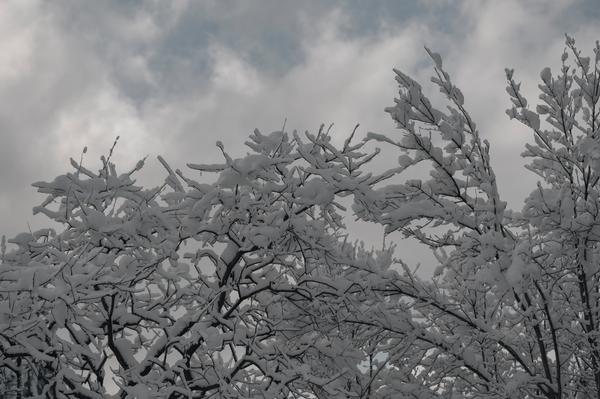Pruning trees is an important part of maintaining the health and appearance of your landscape, but it is important to take certain precautions when pruning in the winter months. Cold temperatures, ice, and snow can all make tree pruning more challenging and dangerous, so it is important to be prepared and take appropriate safety measures. Here are some tips for pruning trees safely in the winter months while living in Colorado.
Know Your Trees
It is important to understand the specific needs and characteristics of the trees you are pruning. The best time to prune trees is in the winter. Pests and fungal diseases present in the warmer months are usually dormant allowing for less risk to your tree’s health. If you are unsure about how to prune your trees, consider consulting with a certified Arborist or a tree care specialist.
Dress Appropriately
Pruning trees in the winter can be physically demanding, so dressing appropriately will help you stay warm and comfortable. Wear layers of clothing to help regulate your body temperature, and make sure you have a hat, gloves, and other warm gear to protect your hands, head, and feet. If you will be working in the snow or on icy surfaces, consider wearing boots with good traction to help prevent slips and falls.
Use the Right Tools
Using the right tools will make tree pruning safer and more effective. Make sure you have a good-quality pruning saw or lopper. If you are using a chainsaw, make sure it is in good condition and that you know how to use it safely which includes wearing all necessary personal protective equipment (PPE).
Be Aware of the Weather
Cold temperatures, ice, and snow can all make tree pruning more difficult and dangerous. If possible, try to avoid pruning trees when the weather is extremely cold or when there is ice or snow on the ground. If you must prune trees in these conditions, take extra care to avoid slipping or falling, and be prepared for longer cutting times due to the increased resistance of cold wood.
Remove Damaged or Diseased Branches First
When pruning trees in the winter, it is important to remove any damaged or diseased branches first. These branches can pose a risk to the health and stability of the tree and should be removed as soon as possible. Be sure to make clean cuts and remove the branches all the way back to the trunk or to a healthy lateral branch.
Prune With a Purpose
When pruning trees in the winter, have a clear purpose and plan in mind. Avoid over pruning, as this can cause stress to the tree and interfere with its natural growth patterns. Instead, focus on removing dead, damaged, or diseased branches and shaping the tree to achieve your desired appearance.
Consult a Professional at Splintered Forest
If you are unsure of the legality of the tree you are pruning based on its species or vicinity to other property lines, it is best to consult a professional before proceeding. Pruning trees during the winter months can put additional stress on the tree and should be done carefully to make sure it can grow back healthy the following season. Contact Splintered Forest for a free estimate on your winter tree pruning needs. We offer our services to the greater Denver area and Colorado’s Front Range communities learn more about our service areas: extended tree services in Colorado.
Tree Services in Evergreen Colorado.
Find out when is tree trimming season.

